Shanze Fatima Javed
Week 8 – Project 2 Reflection
When I began Project 2, finding the right design felt like navigating through a dense fog which is challenging and unclear. The assignment’s guidelines were my beacon, yet the concept didn’t come easily. It was in this creative quietude that the idea of a decorative piece emerged. With my iPad as my canvas and its pencil as my brush, the outlines of a design took shape, guided by intuition. At this stage it was interesting for me but very hard to visualize what to make because I felt reading the instructions that this actually project actually wanted me to make something which I really want to and it doesn’t solely depend on it’s complexity yet I am not sure if these were the exact instructions and I comprehended them in the correct manner
Despite the initial contentment with my sketch and grasshopper definition, a meeting session with , Marcele, revealed a significant oversight. The design I envisioned as unique bore a striking resemblance to an advanced vase, a path I was cautioned to avoid. This realization baffled me; time was less, and the pressure was mounting. I found myself at a crossroad, clueless and anxious. Thankfully, Marcele’s suggestion to explore Pinterest provided a much needed lifeline. The platform was a treasure trove of ideas and images, one of which eventually became the cornerstone of my final piece. This phase was a true lesson in design—it taught me that what seems straightforward can be complex, and vice versa. The project that materialized was simple at a glance but layered with intricacy, a quality that resonated with me deeply, especially as I could wear my bracelet —a personal touch that brought immense satisfaction.
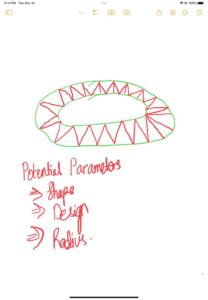
The journey through the technical landscape of this project was as enlightening as it was challenging. My initial plan was to harness the power of the ghpython script within Grasshopper’s math component. My background in Python promised a smooth sail; however, the reality was a different story. The syntax was unique to Rhino, not the Python I knew. This unexpected twist meant I had to recalibrate my approach. Reluctantly, I set aside the idea of scripting. Instead, I chose to navigate through the rich array of components Grasshopper offered. This was not the advanced, novel approach I had hoped to take, but it was a practical one. The definition I created walked a fine line—it was sophisticated enough to capture the essence of my design yet not so complex that it was unmanageable. This balance was struck during long hours that stretched into the night, as the deadline loomed.
The process started with basic shapes—the point and the circle. From there, I carefully selected parameters that would bring my vision to life. YouTube tutorials were a companion during this time, not for direct instruction but for understanding which tools could best serve my purpose. A significant technical obstacle I encountered was understanding the term ‘brep.’ This jargon was foreign to me, and it was only after some research that I discovered it referred to a polysurface. The realization was a key moment, allowing me to join edge surfaces effectively and move forward with my design. Here are snippets of some of the parts of my grasshopper definition which were initially hard for me to understand which exact component to use but with the use of the website grasshopper components it got much easier


Looking back at the completion of Project 2, I see a canvas of experiences—some filled with bold strokes of discovery, others with the fine lines of detailed learning. The project, now concluded, appears simple, but it’s the embodiment of numerous hours of thought, design, and execution. It’s a creation that I can wear, which adds a layer of personal fulfillment to the professional achievement.
The feedback from my peers and instructors was a crucial aspect of the project’s development. It served as a guiding light, illuminating the areas of strength and those requiring further refinement. The critique was sometimes tough to accept, but always constructive. If I were to embark on this project again, I would integrate this feedback earlier in the design process, allowing it to shape the development from the ground up. I would ensure to have more iterations to experience making something elegant and beautiful but at the same time try to play around with different materials not just one type of material ideally the materials which are soft like rubber. The project can get more advanced by adding more texture to it and advanced designs
In terms of technical skills, the project was a proving ground. It tested my ability to adapt to grasshopper and its tools under pressure. The compromises I made, particularly in forgoing scripting, were tough but necessary as I initially imagined scripting as a pretty easy component which will enable me to make my project much more advanced with using simple syntax. However, It taught me to be flexible and to work with the resources at hand, a skill that will no doubt be valuable in future projects.
The discoveries made along the way have been enlightening. I’ve learned that a clear understanding of tools and terminology is crucial and that sometimes, stepping back from a preferred but complicated path can lead to an equally rewarding destination. This project was not just about creating a piece with parameters ; it was about exploring the boundaries of my knowledge and stretching the limits of my creativity. As I reflect on the project, I recognize the parts that were successful and those that were less so. The design was well-received, but the realization that it could have been improved with more time and resources lingers. In future work, I aim to build on this foundation, employing a more nuanced understanding of design principles and a deeper exploration of Grasshopper’s potential.
The ideas that this project engaged with are numerous, and they extend beyond the confines of a classroom assignment. They touch on the core of design thinking—problem-solving, aesthetic value, and user experience. Looking forward, I’m excited to take these concepts and weave them into new projects, each with their own set of challenges and opportunities for growth. Parametric designs are very interesting and I believe grasshopper gives us scope and ability to create interesting definitions and then play around with that object in my case with my definition I could make bracelet, ring, choker and possibly other things if I played with the definition a little more.
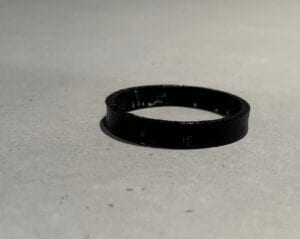
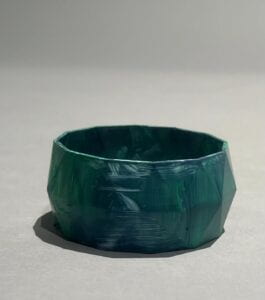
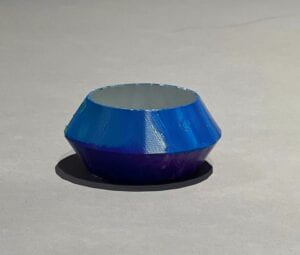
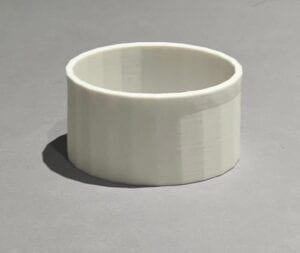
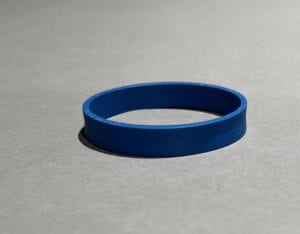





Credits